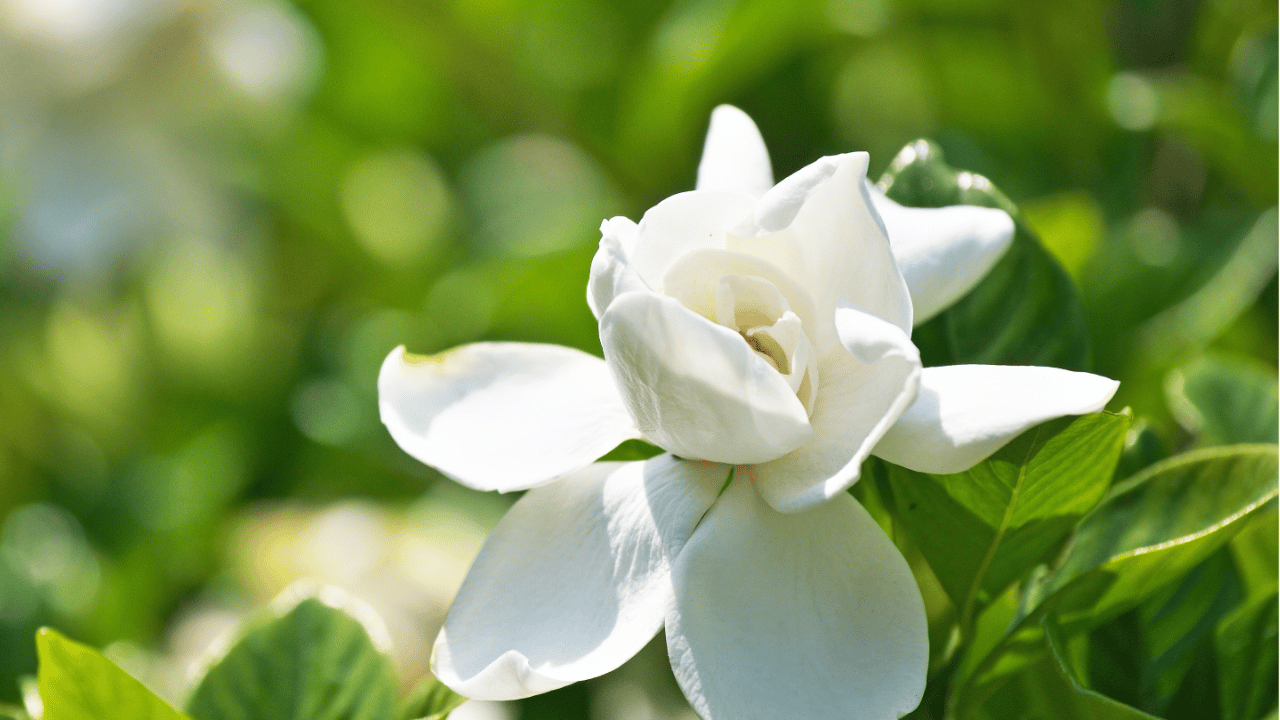Gardenias are beloved for their fragrant, creamy-white flowers and glossy green leaves, but they can be a bit finicky to care for. However, with the right conditions and attention to detail, they’ll reward you with abundant blooms and rich foliage. Here are ten specific tips to help you nurture your gardenia plant to its fullest potential, ensuring it thrives year after year.
1. Choose the Right Location
Gardenias thrive in a spot where they can receive bright, indirect sunlight. A location with morning sun and afternoon shade is ideal. Too much direct sun can scorch the leaves, while too much shade will reduce flowering. Place your gardenia in a spot where it gets at least four to six hours of indirect light each day for optimal growth.
When planting outdoors, avoid placing your gardenia near heat-reflecting walls or concrete paths, as they can create overly warm microclimates. Indoors, positioning near an east-facing window provides the right balance of light and shade.
2. Maintain Consistent Moisture
Gardenias prefer consistently moist but well-draining soil. Water your plant when the top inch of soil feels dry, but avoid waterlogging the roots. Overwatering can cause root rot, while letting the soil dry out completely may lead to bud drop and wilted foliage. Use rainwater or distilled water if possible, as gardenias are sensitive to hard water.
To maintain the right moisture level, consider mulching around the plant with pine bark or compost. This will help retain soil moisture, regulate temperature, and provide slow-release nutrients.
3. Monitor Soil Acidity
Gardenias require acidic soil with a pH of 5.0 to 6.0. If the soil is too alkaline, the plant will struggle to absorb nutrients, leading to yellow leaves and poor growth. Test your soil’s pH regularly, especially if your gardenia is showing signs of chlorosis (yellowing between the veins).
To lower soil pH, you can add organic matter such as peat moss, sulfur, or iron sulfate. Alternatively, you can water with an acidic fertilizer formulated for azaleas and camellias to maintain the appropriate pH levels.
4. Fertilize Regularly but Cautiously
Fertilizing gardenias is crucial, but overfeeding can lead to leaf burn and poor blooming. Use a balanced, slow-release fertilizer with micronutrients or one specifically for acid-loving plants like gardenias. Apply it during the growing season, typically from spring to early fall, following package directions.
Avoid fertilizing in late fall or winter when the plant is not actively growing. This can encourage new growth that’s susceptible to frost damage. Also, be mindful of nitrogen-heavy fertilizers, as too much nitrogen can promote leaf growth at the expense of flowers.
5. Prune After Flowering
Pruning gardenias right after their blooming season helps shape the plant and encourages healthy new growth. Trim back any dead or weak branches, and remove faded blooms to stimulate further flowering. Be careful not to prune too late in the season, as this can remove the buds for next year’s blooms.
Gardenias also benefit from light pruning throughout the year to maintain their shape. However, avoid cutting into old wood, as this can reduce the plant’s ability to produce flowers.
6. Manage Humidity Levels
Gardenias love high humidity, which can be a challenge in dry or air-conditioned environments. If you’re growing them indoors, increase humidity by placing the pot on a tray filled with pebbles and water or using a humidifier. Outdoors, mist the leaves in the morning or place your gardenia near other plants to create a micro-humid environment.
Maintaining proper air circulation while managing humidity is important. Overly damp conditions without airflow can lead to fungal diseases, so be cautious not to overcrowd the plant.
7. Protect from Pests
Common gardenia pests include aphids, whiteflies, and spider mites. Regularly inspect the undersides of the leaves for signs of infestation, such as small webs, sticky residue, or yellowing leaves. Treat early infestations with insecticidal soap or neem oil, applying thoroughly to both the tops and bottoms of the leaves.
For severe infestations, you may need to use a stronger insecticide. Always follow the label instructions, and avoid spraying during hot weather to prevent leaf burn. Additionally, promoting beneficial insects like ladybugs can help control pest populations naturally.
8. Avoid Sudden Temperature Changes
Gardenias are sensitive to temperature fluctuations. Keep the environment stable, aiming for daytime temperatures between 65°F and 70°F and nighttime temperatures around 60°F. Sudden drops in temperature can cause bud drop, while excessive heat can stress the plant.
If you’re growing gardenias indoors, avoid placing them near drafty windows or heating vents. For outdoor plants, cover them with a frost cloth if cold weather is expected, and provide shade during extreme heat waves to minimize temperature stress.
9. Ensure Proper Drainage
Gardenias are particularly susceptible to root rot, which often occurs due to poor drainage. Whether planting in the ground or in a pot, ensure that water can drain freely. For potted plants, use a well-draining soil mix and a pot with drainage holes. For garden beds, amend heavy clay soils with organic matter to improve aeration and drainage.
Raising the gardenia slightly above ground level when planting outdoors can also help prevent water from pooling around the roots, especially in areas prone to heavy rainfall.
10. Encourage Blooming with Light and Care
If your gardenia isn’t blooming, it may not be receiving enough light. Ensure the plant gets sufficient indirect sunlight, but avoid direct midday rays that can scorch the buds. Light plays a key role in flower production, so increasing light exposure can often trigger more blooms.
Additionally, avoid pruning too aggressively, as this can remove flower buds. Make sure your plant is well-fed with an acidic fertilizer and maintained in its ideal environment to support bloom development. Proper care and patience will eventually lead to rewarding, fragrant blossoms.

